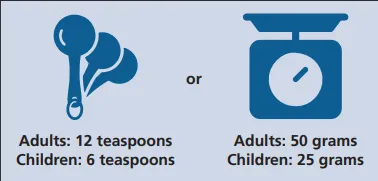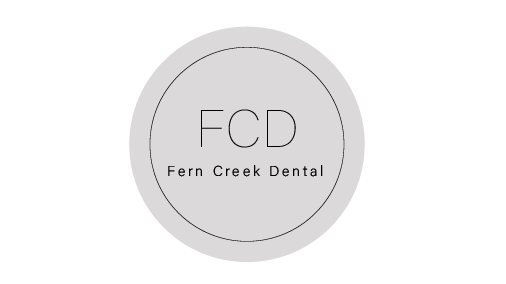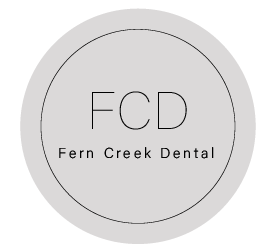Saving Your Mouth from Sugar
Research shows that a diet high in added sugar can increase the risk of cavities and gum disease.1,2 Left untreated, these dental diseases can lead to tooth loss.
ADDED SUGAR IN DIETS
Many foods that come in packages often have added sugar in them.3 This includes many snack foods like chips and pretzels. You might not expect that sugar is also added to other foods like frozen meals and ketchup or other sauces. Drinks also may be high in added sugar.4
Your oral health is especially at risk from foods that are sticky or gummy because they stick to your teeth. These not only include many candies but also many chewable over-the-counter medicines (like antacids), vitamins, and supplements.
Flavored yogurts and many formulas, baby foods, and juices may be sweetened with added sugar as well. Juices are often used when weaning infants from formulas or breast milk. However, the American Academy of Pediatric Dentistry recommends that juice not be given to infants younger than 1 year. After that, juice should be limited.5 Talk to your child’s doctor about how much juice is okay for your child.
They also suggest that infants and children should not suck on bottles or sippy cups filled with juice for long periods and should not go to sleep with a juice-filled bottle or sippy cup.
READ THE LABEL
The US Department of Agriculture and American Academy of Pediatrics suggest limits you should place on added sugar in

Figure. Food and beverage labels may list added sugar. The US Department of Agriculture says adults should have no more than the amounts pictured above per day.4 The American Academy of Pediatrics sets the daily limits for children.
your daily diet (Figure). Packaged products have nutrition labels that include information on added sugar to help you choose foods and drinks.
CONCLUSION
Added sugar in a diet can increase the risk of cavities and gum disease. Be sure to check the labels on your foods and drinks to see how much added sugar they contain. Visit MyPlate.gov for tips on a healthy diet.7
https://doi.org/10.1016/j.adaj.2023.03.012
Prepared by Anita M. Mark, senior scientific content specialist, ADA Science and Research Institute, Chicago, IL.
Disclosure. Ms. Mark did not report any disclosures.
Copyright© 2023 American Dental Association. Unlike other portions of JADA, the print and online versions of this page may be reproduced as a handout for patients without reprint permission from ADA Publishing. Any other use, copying, or distribution of this material, whether in printed or electronic form, including the copying and posting of this material on a website, is prohibited without prior written consent of ADA Publishing.
“For the Patient” provides general information on dental treatments. It is designed to prompt discussion between dentist and patient about treatment options and does not substitute for the dentist’s professional assessment based on the individual patient’s needs and desires. You can find more information for patients at ADAstore.org or at MouthHealthy.org.
1. Tungare S, Paranjpe AG. Diet and nutrition to prevent dental problems. In: StatPearls. NCBI Bookshelf version. StatPearls Publishing: 2023. Accessed April 4, 2023. https://pubmed.ncbi.nlm.nih.gov/30480981
2. Gupta M. Sugar substitutes: mechanism, availability, current use and safety concerns—an update. Open Access Maced J Med Sci. 2018;6(10):1888-1894.
3. Martínez Steele E, Baraldi LG, Louzada ML, Moubarac JC, Mozaffarian D, Monteiro CA. Ultra-processed foods and added sugars in the US diet: evidence from a nationally representative cross-sectional study. BMJ Open. 2016;6(3):e009892.
4. US Department of Agriculture, US Department of Health and Human Services. Dietary Guidelines for Americans, 2020-2025. 9th ed. December 2020. Accessed March 21, 2023. https://www.dietaryguidelines.gov/sites/default/files/2020-12/Dietary_Guidelines_ for_Americans_2020-2025.pdf
5. American Academy of Pediatric Dentistry. Policy on dietary recommendations for infants, children, and adolescents. The Reference Manual of Pediatric Dentistry. American Academy of Pediatric Dentistry; 2021:87-89.
6. Korioth T. Added sugar in kids’ diets: how much is too much? American Academy of Pediatrics. March 25, 2019. Accessed April 5, 2023. https://publications.aap.org/aapnews/ news/7331?autologincheck¼redirected 7. Learn how to eat healthy with my plate. US Department of Agriculture. Accessed March 23, 2023. https://www.myplate.gov











